If you're like most people who love the outdoors, you've probably considered camping. Camping is a great way to enjoy the beauty of nature and get some fresh air. It can also be a great way to bond with family and friends.
But is camping dangerous? Before you head out into the woods for your adventure, it's essential to consider safety.
While camping can be risky if you're not careful, by following a few simple safety tips, you can reduce your risk of injury or harm while ensuring that everyone has a great time.
Here are some things to be mindful of when heading outdoors.
More...
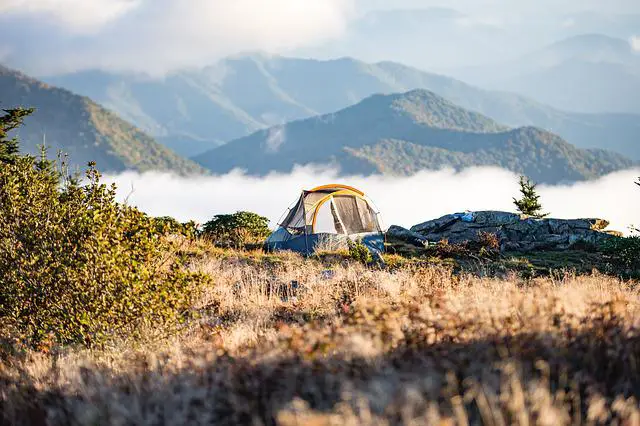
Table of Contents
Know the Terrain Where You’ll Be Camping
One of the most important things to consider when camping is the terrain. Know where you're going and understand the conditions you’re heading into. If you're unfamiliar with the area, take some time to research it before setting out. Different terrains and environments present unique challenges that you'll need to be prepared for.
Desert
Deserts are some of the most beautiful and serene places on earth. But if you're not prepared, they can also be highly hostile environments. So before heading out on a camping trip to the desert, you should understand the unique challenges of desert camping.
For starters, the most obvious challenge is the lack of water. In the desert, it's important to pack plenty of water - at least one gallon per person per day. And, if possible, try to find a campsite near a natural water source, such as a spring or river.
Another big challenge is the heat. During the daytime, temperatures in the desert can easily reach 100 degrees or more. To stay cool, wear light, loose-fitting clothing and use sunscreen to protect your skin from the sun's harmful rays. The temperature usually drops significantly at night, so you'll want to have a warm sleeping bag and clothing to keep you comfortable.
Finally, since there is often little vegetation in deserts, another challenge is finding somewhere to set up your tent. Look for an area with some rocks or other natural features that can provide windbreaks and help anchor your tent. And, always be aware of your surroundings for signs of snakes or other desert animals.
Forest
When most people think of forests, they picture peaceful scenes of tall trees and dappled sunlight. However, the reality is that forest terrain can be pretty varied, from dense rows of evergreens to open meadows. And while camping in the forest is a great way to connect with nature, it's essential to be prepared for the challenges that this type of terrain can present.
When camping in a forest, one thing to keep in mind is that the ground can be uneven and covered with roots and rocks. That's why it's important to wear sturdy, comfortable footwear. Hiking boots are a good option, but make sure they're broken in before hitting the trail.
You might also want to bring along a pair of walking sticks to help with balance and stability.
In terms of shelter, tents are typically the best option for camping in a forest. But if you're backpack camping, be sure to pack a tarp or ground cloth if you need to set up camp on an uneven surface.
And last but not least, be aware of your surroundings for signs of wildlife. For example, bears are a common hazard in forested areas, so make sure you know what to do if you encounter one.
Canyons
Camping in a canyon can be an exhilarating experience. There is something about being surrounded by sheer cliffs that makes you feel alive. However, it is crucial to be prepared before setting out on a canyon camping trip.
The first thing to consider is the terrain. Canyons are often quite rugged, with loose rocks and uneven footing. Be sure to wear sturdy shoes and pack a walking stick to help you navigate the terrain.
It is also essential to be aware of the weather conditions. Canyons can experience extreme temperature changes, so pack appropriate clothing.
And finally, always let someone know your plans before heading out into the wilderness. With a bit of preparation, canyon camping can be a safe and unforgettable experience.
Swamp
Swamps are one of the most unique ecosystems in the world, and they can offer a great camping experience for those who are prepared.
Swamps are characterized by slow-moving or stagnant water, often with a deep layer of mud. The soil is also highly acidic, making it challenging to find suitable campsites.
In addition, mosquitoes and other insects are commonly found in swamps, so campers need to pack bug spray. Other dangers include snakes and alligators, so you should be aware of your surroundings.
However, if you take the necessary precautions, camping in a swamp can be a truly remarkable experience. You'll be able to appreciate the unique beauty of this ecosystem and get away from the hustle and bustle of everyday life.
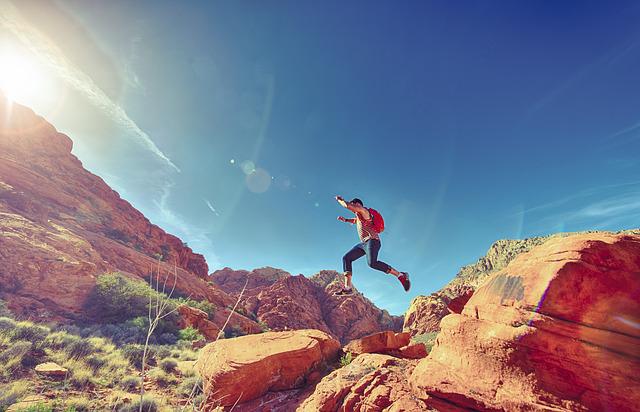
Prepare for the Weather
One of the most important things to do when camping is to prepare for the weather. This means checking the forecast before you leave and packing accordingly.
If you're camping in an area prone to severe weather, such as thunderstorms or hurricanes, you should have a plan in place if you need to evacuate.
And, even if the weather is mild, it is always a good idea to pack extra clothing and supplies in case of an emergency.
Here are some specific weather events you should always be prepared for.
Lightning
Lightning is one of the most dangerous weather phenomena that campers can encounter. People are injured or even killed by lightning strikes while camping every year.
One of the reasons why lightning is so dangerous is because it can strike from far away. That means that even if you're not in the direct path of a storm, you could still be struck by lightning.
Additionally, lightning strikes tend to be more frequent and intense in open spaces like campsites. That's because there's nothing to block or absorb the lightning's energy.
Finally, lightning tends to strike at the highest point in an area. So if you're camping in a tent, you're at a higher risk of being struck than sleeping in a low-lying area.
The best way to deal with lightning when camping is to avoid it altogether. If there's a storm brewing, try to find shelter before it arrives.
If that's not possible, stay away from tall objects like trees and cliffs. And finally, avoid touching metal objects since they can conduct electricity. If you follow these simple tips, you'll be able to stay safe during a lightning storm.
Flash Floods
Flash floods can be hazardous for campers. In minutes, vast amounts of water can surge through an area, causing severe damage and death. Campers need to be aware of the dangers of flash floods and know how to best deal with them. Here are some tips:
Avoid camping in low-lying areas that are prone to flooding. If possible, choose a
campsite on higher ground.
Pay attention to weather forecasts and warnings. If there is a chance of heavy rains, evacuate the area.
Do not try to cross a flooded river or stream. The current can be powerful, and you could be swept away. Wait until the water level goes down before attempting to cross.
Suppose your campsite floods; move to higher ground immediately. Do not wait around to see what will happen. Floodwaters can rise quickly and without warning.
By following these simple tips, you can help keep yourself safe from the dangers of flash floods while camping.
Extreme Heat
Extremes of heat and cold can be dangerous for campers, but heat is especially hazardous because it can lead to dehydration, heat stroke, and other serious health problems.
When temperatures get too high, the body's natural cooling mechanisms break down. As a result, sweating becomes less effective, and the body's core temperature rises. If this rise is not quickly corrected, it can lead to heatstroke, which is fatal.
To avoid this danger, campers need to take steps to stay cool and hydrated in hot weather.
Drinking lots of fluids, avoiding strenuous activity during the hottest part of the day, and wearing loose, light-colored clothing are essential precautions.
If possible, campers should also find a shady spot to relax during the hottest hours. By taking these precautions, campers can enjoy their time in the great outdoors without risking their health.
High Winds
High winds can be dangerous for campers for a few reasons.
First, high winds can knock over tents and equipment, and if there are any loose objects around, they can become projectiles.
Second, high winds can make starting a campfire or keeping it burning a challenge.
Third, high winds can cause tree branches to fall, which can be dangerous for campers underneath them.
Finally, high winds can create dust and debris that irritate the eyes and lungs.
So what can you do to stay safe while camping in high winds?
First, ensure that your tent is secured correctly and that all your equipment is stored away safely.
Second, build your campfire in a sheltered spot and keep a close eye on it.
Third, avoid camping under large trees or near dead branches.
And fourth, bring along some eye protection and a dust mask to avoid breathing in any debris.
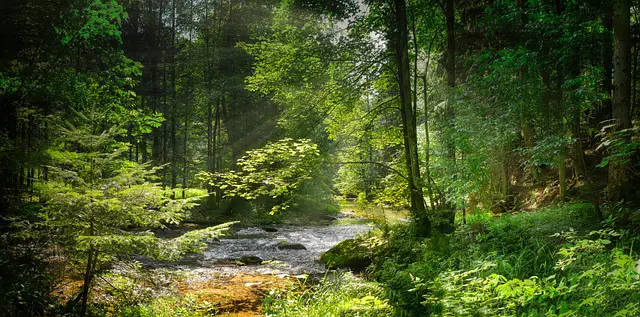
Don’t Discount Animals
Many people think of animals as cute and cuddly, but the truth is that they can be dangerous. Even small animals like squirrels can carry diseases, and larger animals like bears can be hazardous for any camper.
That's why it's essential to be aware of the animals that live in the area where you'll be camping and take steps to avoid them. Here are some specific animals to watch out for in your adventures.
Bears
Bears are one of the most dangerous animals that campers can encounter. They are large, strong, and often aggressive. If you see a bear while camping, your best bet is to stay calm and avoid eye contact.
Do not try to run away from a bear, as this will only trigger its instinct to chase down prey. Instead, if a bear begins to approach you, make yourself as small as possible and make loud noises to scare it away.
If all else fails, try to use bear spray or a firearm to defend yourself.
Cougars
Cougars, also known as mountain lions or pumas, are another dangerous animal that campers may encounter. These large cats are stealthy predators that can be very dangerous to humans.
If you spot a cougar, your best bet is to make yourself as large as possible and make loud noises. Throw things, act wild and crazy, do anything you can to intimidate the cougar and make it feel like you are a threat.
If the cougar does attack, fight back with everything you've got since these animals are known to fight to the death.
Scorpions
Scorpions are small, but they pack a powerful punch. These venomous creatures can cause serious health problems for campers, so it's essential to be aware of them.
Suppose you see a scorpion while camping. Your best bet is to stay calm and avoid sudden movements. If you are stung by a scorpion, seek medical attention immediately. Most scorpion species are non-lethal, but the severity of the sting depends on each individual’s body makeup. You don’t want to take any risks.
Rattlesnakes
Finally, rattlesnakes are another potential danger to campers. These venomous snakes can cause serious health problems, and they are often found in areas where people camp.
If you encounter a rattlesnake, stay calm. Slowly back away from the snake and give it a wide berth. If a rattlesnake bites you, get to a hospital as quickly as possible. Bites are rarely fatal, but they can take a turn for the worse if not treated.
Conclusion
Camping is a great way to enjoy the outdoors, but it's essential to be aware of its dangers. By taking some simple precautions, you can ensure that your camping trip is safe and fun for everyone involved and avoid any unwanted surprises.
- Are Merrell Shoes Good? – An Unbiased Review of Merrell Footwear - December 9, 2023
- Where Are Merrell Shoes Made? - December 9, 2023
- Camping in 40-degree Weather: Tips and Tricks - September 25, 2023

![How to Protect Yourself While Camping? [TOP Camping Safety Tips] How to Protect Yourself While Camping? [TOP Camping Safety Tips]](https://grandcircletrails.com/wp-content/uploads/2022/07/How-to-Protect-Yourself-While-Camping-1-150x150.jpg)
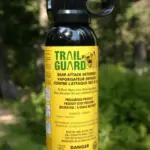
![How to Make a Tent Warmer? [Easy & Simple Steps] How to Make a Tent Warmer? [Easy & Simple Steps]](https://grandcircletrails.com/wp-content/uploads/2022/10/How-to-Make-a-Tent-Warmer-1-150x150.jpg)
![Can You Use a Propane Heater in a Tent? [Is It Safe?] Can You Use a Propane Heater in a Tent? [Is It Safe?]](https://grandcircletrails.com/wp-content/uploads/2022/06/Can-You-Use-a-Propane-Heater-in-a-Tent-150x150.jpg)
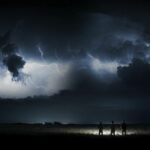
![How to Store Cast Iron for Camping? [Tips & Tricks] How to Store Cast Iron for Camping? [Tips & Tricks]](https://grandcircletrails.com/wp-content/uploads/2022/05/How-to-Store-Cast-Iron-for-Camping-150x150.jpg)